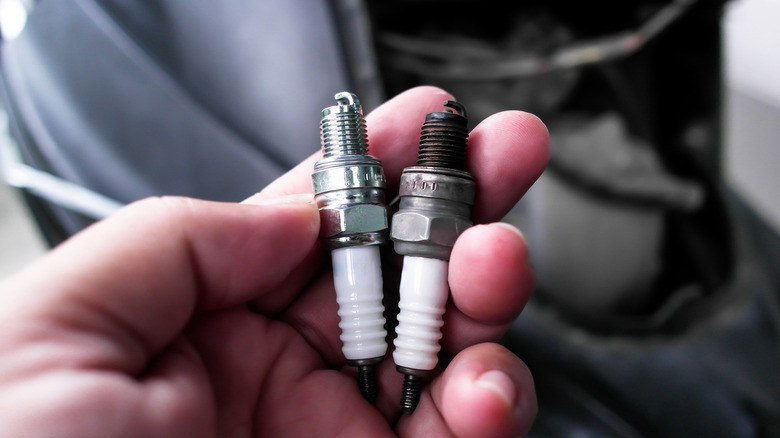Spark Plugs Seized? Here's What Causes It & How To Remove Them
We may receive a commission on purchases made from links.
DIY car engine maintenance is hardly rocket science, but simple tasks can become unexpectedly difficult and seriously disrupt your routine. It's vital to check and replace your spark plugs regularly as this will help keep your engine running cleanly and efficiently, but this job get infinitely harder if your spark plugs seize in the cylinder head. This fusion or cross-threading between the plug threads and ports in the heads makes them difficult or impossible to remove and can be caused by corrosion, extreme heat, carbon build-up, or sloppy installation.
Corrosion can be the result of coolant leaks, often at the cylinder head gaskets. Carbon buildup around spark plugs is especially common on Gasoline Direct Injection (GDI engines), and sometimes the extreme heat of engine operation can weaken metals and cause plugs to seize. In other cases, the plugs get stuck because they were cross-threaded or overtightened during installation. Never use a power tool to install spark plugs; it's best to hand-thread them until they're fully seated before using a torque wrench to tighten them to specification. If any of these conditions befall you and you end up with seized spark plugs, here's what you can do.
How to remove seized spark plugs
Knowing how often you should change your spark plugs can help prevent them from seizing since older plugs are more likely to fuse to the cylinder head. While you may end up needing a professional mechanic, removing seized spark plugs is something you might manage on your own with the right tools and guidance. All you'll need is some penetrating lubricant, a few tools, and a bit of persistence.
To remove seized spark plugs, start by taking off your engine cover and removing the wires or coil packs from each plug. Take photos as you go for reference during reassembly, and wait until the engine is cool to prevent burns and possible thread damage. Hot plugs are also more likely to break during removal, presenting a different problem. When you can see the tops of your plugs, soak each one in a penetrating solvent like PB Blaster or Liquid Wrench and let it sit for an hour or two. Some mechanics suggest using a socket to wiggle the spark plugs a bit, giving the oil room to work its magic.
After an hour or so, use your socket and ratchet handle to try and loosen the spark plugs. If they still don't budge, apply more penetrating oil and wait a while longer. Be generous with your use of spray; sometimes waiting overnight will do the trick. You might also need to apply more force using a breaker bar or piece of pipe over the ratchet handle. If the added time and leverage don't get them loose, a professional mechanic may be able to cut, drill, or press your plugs out and install new threaded ports in the heads. Unfortunately, in some cases the heads might need to be replaced as a last resort.

